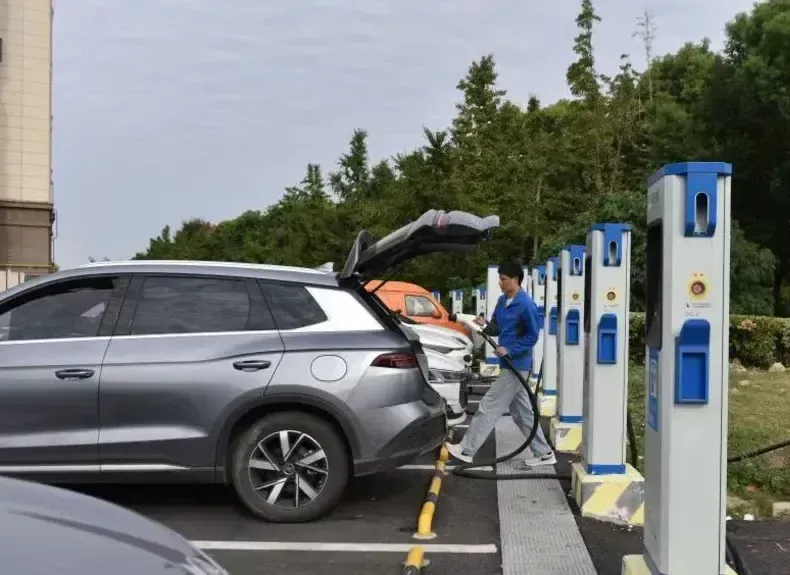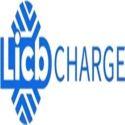Notifications

8 minutes, 8 seconds
-3 Views 0 Comments 0 Likes 0 Reviews

As electric vehicles (EVs) gain momentum around the globe, the demand for faster and more convenient charging solutions is reshaping how we “refuel.” Enter DC Fast Chargers (DCFCs)—a critical innovation that’s enabling long-distance EV travel, supporting commercial operations, and accelerating the clean energy transition.Know more about Google SEO Directory
To understand why DC fast charging matters, let’s start with the basics of how EVs store energy and why direct current (DC) is the key to speed.
EV batteries store energy as direct current (DC), but the electricity supplied by our power grids is alternating current (AC). At home or at work, Level 1 or Level 2 AC chargers depend on your vehicle’s onboard charger to convert AC into usable DC power. This process works—but it takes time.
DC Fast Chargers skip the onboard converter and deliver electricity directly to the battery. By bypassing the internal conversion step, DCFCs dramatically reduce charging time.
Think of it like this:
AC Charging = sipping through a straw
DC Fast Charging = drinking from a fire hose—efficient, safe, and fast
A DC Fast Charger is a high-powered EV charging station that supplies DC electricity straight to the vehicle battery, reducing charging times from hours to as little as 20–45 minutes for an 80% charge.
DCFCs are most commonly found:
At highway rest stops
In urban centers
At fleet depots
In commercial parking lots
They're essential for EV drivers who don’t have time to wait for a slow charge—and for businesses that need vehicles back in operation quickly.
Charging speed is measured in kilowatts (kW) and varies by charger and vehicle. Here’s a breakdown:
| Charger Type | Power Rating | Example Use | Charge Time (to 80%) |
|---|---|---|---|
| Level 1 (AC) | 1.2–1.8 kW | Home outlet | 12–20 hours |
| Level 2 (AC) | 3.3–19.2 kW | Home/work | 4–8 hours |
| DC Fast (DC) | 50–350 kW | Public/fleet | 20–45 minutes |
A 50 kW charger adds ~100 miles in 30 minutes
A 350 kW charger can add the same in under 10 minutes—if the vehicle supports it
⚠️ Important: Your EV must be capable of accepting higher charging rates. Plugging a 50 kW-capable EV into a 350 kW charger won’t make it charge faster than 50 kW.
DCFCs are strategically deployed where time is limited and traffic is high:
Highways & Rest Stops: Ideal for long trips and reducing “range anxiety”
Urban Charging Hubs: Keeps taxis, rideshares, and delivery fleets moving
Retail Locations: Attract customers who shop or dine while charging
Commercial Depots: Essential for logistics and fleet efficiency
DCFCs slash charging time from hours to minutes, allowing EV drivers to hit the road faster with minimal delay.
With growing DCFC networks, EV drivers can travel further without worrying about battery range.
Businesses offering DCFCs can increase foot traffic and customer dwell time while enhancing their green image.
Installing DCFCs today ensures compatibility with the next generation of EVs featuring higher power acceptance and bigger batteries.
Some drivers worry that repeated fast charging might reduce battery life. While it’s true that heat from rapid charging can stress batteries, modern EVs are equipped with battery management systems (BMS) that regulate temperature and charge flow to avoid long-term damage.
Use DCFC when needed: Rely on Level 2 charging for daily use
Avoid charging to 100% often: Most batteries charge slower (and stress more) above 80%
Let the battery cool between fast charges, especially on long trips
Occasional use of DCFCs is safe and expected—today’s EVs are engineered for it.
For retailers, developers, fleet operators, and municipalities, DC Fast Charging offers tangible returns:
Attract more customers to shopping malls, hotels, and restaurants
Increase brand value by showcasing environmental leadership
Electrify fleets and reduce fuel costs while maintaining productivity
Support tourism and economic development in clean mobility corridors
Government programs often provide rebates, grants, or tax credits to offset the cost of installing DCFCs. In many regions, utilities also offer installation support as part of broader electrification goals.
Explore programs such as:
Federal EV infrastructure grants
State or provincial clean transportation funding
Local utility rebate programs
While DCFCs offer numerous benefits, there are important challenges to address:
High Installation Costs: Equipment, grid upgrades, and permitting can be expensive
Site Requirements: Sufficient electrical capacity and location accessibility are critical
Compatibility: Support for multiple plug types (CCS, CHAdeMO, NACS) is essential
Maintenance: Ongoing servicing and software updates are necessary for reliability
DCFC technology is evolving rapidly. Here’s what’s next:
⚡ Ultra-Fast Chargers (350+ kW) for future EVs with high-capacity batteries
🔋 Battery-Backed Charging Stations to reduce peak demand on the grid
🔄 Vehicle-to-Grid (V2G) systems enabling energy flow from car to grid
☀️ Renewable Integration using solar and storage for clean, off-grid charging
📱 Seamless Payment via mobile apps, contactless systems, and Plug & Charge
DC Fast Chargers are more than just high-speed plug-ins—they are a cornerstone of modern EV infrastructure. By dramatically reducing charging time, they make electric mobility more practical, accessible, and scalable for both drivers and businesses.
For EV owners, DCFCs bring freedom and convenience.
For commercial operators and cities, they represent growth, sustainability, and innovation.
Whether you're planning a road trip, managing a fleet, or building the next green retail hub, DC Fast Chargers are powering the future—one quick charge at a time.
China EV Chargers EV Charger Manufacturer EV Charging Solutions

